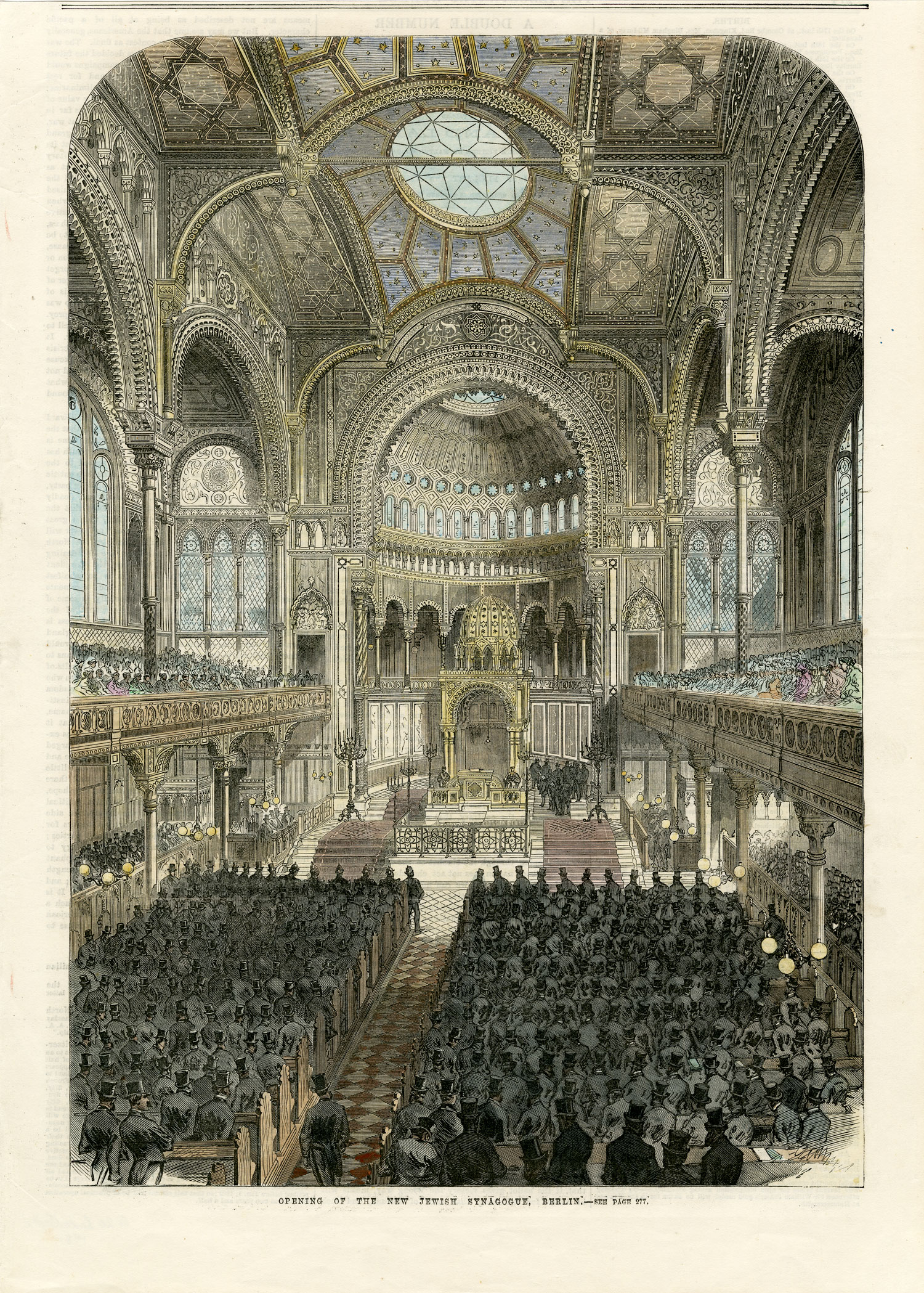The most splendid synagogue opening of the mid-19th century was that of the Neue Synagoge (New Synagogue) on the Oranienburger Strasse, in Berlin, Germany. German Jews, not to be outdone by their Austro-Hungarian neighbors, had embarked on a massive building program using every available engineering and design technology. Constructed between 1859 and 1866 after designs by Eduard Knoblauch (1801–1865), the Neue Synagoge gained fame far beyond the Jewish realm, earning attention in many countries in both the architectural and popular press, including this full-page illustration in the Illustrated London News.
This detailed interior view clearly displays the synagogue’s elaborate architecture and decor, and its well-dressed attendants. The walls are richly painted with stenciled patterns, mostly Moorish in derivation. Attenuated iron columns support the gallery and roof, their slenderness and height allowing the interior to appear open and the vaults exceedingly lofty, with only minimal obstruction of sightlines. Large skylights lit the hall, and the latest inventions for gas lighting and better ventilation were installed throughout.
The exuberance, elegance, and prominence of the synagogue were echoed in the behavior and fashion of Berlin’s mid-century Jewish community. The evening dress congregants wore to the dedication symbolized for many 19th-century German Jews the dignity, formality, and social standing of their position.
Much of the building was destroyed during World War II, first by fire on Kristallnacht in 1938 and then by the Allied bombing of Berlin. Since 1989, the building has been partially restored, its grand golden dome once again a landmark of the skyline.
